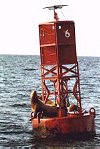 A new federal crackdown on pipeline firm
A new federal crackdown on pipeline firm
September 29,1999
Scott Sunde,Seattle Post Intelligencer
Prompted by a highly publicized failure a week ago,
federal regulators imposed strict new requirements on
the Olympic Pipe Line Co. yesterday that will mean
shutting down and testing segments of the line that run
through Woodinville, Redmond, Bellevue, Renton and
other communities.
The federal order will indefinitely reduce the flow of
petroleum products in 400-mile Olympic system by 1
million gallons a day.
At the same time, the federal Office of Pipeline Safety
raised new concerns about the integrity of Olympic's
system.
The order issued yesterday criticized how diligent the
company has been in investigating possible defects in
the pipeline.
Perhaps more important, regulators also noted that
valves may have been closed incorrectly dozens of
times in recent months.
Computer problems may have caused the valve
closures, which can increase pressure in the pipeline
and weaken it.
"We want to know why it (the valve closures)
happened," said Patricia Klinger, spokeswoman for the
Office of Pipeline Safety. "It's a number that we're
concerned about."
In a prepared statement, Fred Crognale, Olympic's
president, said the company is "willing and able" to
conduct the tests that federal regulators want.
However, he expressed concern that the pressure tests
ordered are at a level higher than those called for in
federal regulations.
"There will be an inquiry to DOT (Department of
Transportation) to further understand the basis of this
order," he said.
The Office of Pipeline Safety is part of the
Transportation Department.
Olympic did not indicate whether it will challenge the
order, which marks the third time that federal regulators
have imposed restrictions and requirements on the
company.
Olympic operates the pipeline from Cherry Point near
the Canadian border to Portland.
The orders follow a June 10 explosion that killed an
18-year-old man and two 10-year-old boys in
Bellingham.
Part of the investigation into the accident has focused on
Olympic's computer system.
The system, which operates and monitors the pipeline,
crashed the day of the accident. Also that day, a valve
closed near a terminal in Skagit County, increasing
pressure in the pipeline in Bellingham.
Yesterday, regulators revealed that valves located
upstream of the Skagit County terminal have closed 59
times since December 1998.
Workers did not close the valves, and Klinger said
regulators are still trying to determine whether the
computer system mistakenly closed them.
Closed valves can cause pressure to build up in the
pipeline, ultimately weakening it.
As part of the order issued yesterday, Olympic will be
forced to perform water-pressure tests on the entire
upper 37 miles of pipeline, which has been closed since
the June 10 accident.
Olympic already has begun those tests, known as
hydrostatic tests, on a 10-mile section of the line that
runs through Bellingham.
A week ago today, a segment of line failed during the
Bellingham test, ripping a 6 1/2-foot hole in the pipe
along a seam.
Part of the latest order also will require Olympic to
close and perform hydrostatic tests on parts of the line
that remain open in Skagit, Snohomish and King
counties.
That includes a 16-inch pipeline that runs through the
suburbs east of Seattle to Renton.
It also will require tests at the same pressures that the
city of Bellingham had demanded. Bellingham has asked
for tests at 133 percent of maximum operating pressure;
regulators have typically required new pipelines to be
tested at 125 percent of maximum operating pressure.
"We're probably being overcautious," Klinger said, "but
we feel there is a need for this at this point."
The order was good news to officials in Snohomish
County. This week, County Executive Bob Drewel and
Rick Larsen, chairman of the County Council, wrote to
federal regulators asking for hydrostatic testing of the
pipeline in Snohomish County.
"This is clearly progress," Larsen said of yesterday's
order. "The safety of this county's citizens is foremost in
our minds."
He said Drewel has talked to county officials in
Whatcom, Skagit, King and Pierce counties about
urging testing in their jurisdictions.
Of concern to federal regulators is a type of pipe
manufactured before 1970 by Lone Star Steel. It was
that type of pipe that failed along a seam during
hydrostatic tests a week ago today.
In their order yesterday, regulators said the pipe is
vulnerable to failures at its seams.
Most of the 37-mile upper segment of the pipeline is
made of that brand of pipe. So are parts of the 16-inch
pipeline from near Allen in Skagit County to Renton and
a 16-inch line from the Anacortes refineries to Allen.
Those lines are still open.
Olympic says only small parts of the Allen-to-Renton
and Anacortes-to-Allen lines are made of Lone Star
pipe. But testing that pipe will require closing the entire
line.
The Lone Star pipe has been the subject of 12 previous
failures on other pipelines in 1988 and 1989, prompting
regulators to issue nationwide alerts in those years.
What's more, if problems are found with other types of
pipe used on the Olympic line, federal regulators may
require further hydrostatic testing.
In fact, regulators noted yesterday that during the
original hydrostatic test of the line from Renton to
Portland in 1965, there was a failure.
That section of pipe was not made by Lone Star.
As part of the new requirements imposed on Olympic
Pipe Line Co., the company must operate its pipeline at
80 percent of the maximum operating pressure.
According to the order, "a 20 percent reduction would
provide (a) substantial margin of safety in this case."
Olympic began to operate its pipeline at the lower
pressure this week.
It has reduced flow in the system from from 7.9 million
to 6.9 million gallons a day. Before the June 10
accident, Olympic's pipeline was handling 12.8 million
gallons a day.
Olympic must also come up with a written plan to
respond to possible defects found during internal
inspections of the pipeline.
Three years ago, those inspections turned up more than
250 "anomalies," but the company considered almost all
too minor to investigate, regulators said. That usually
requires digging up the pipe and visually inspecting it.
The Office of Pipeline Safety said yesterday its review
of previous internal inspections suggests "that not all
anomalies that should have triggered additional
investigation for possible corrective action were
located, investigated and corrected in a timely way."
P-I reporter Scott Sunde can be reached at
206-448-8331 or scottsunde@seattle-pi.com
Related Links
Seattle Post-Intelligencer-- Seattle Post-Intelligencer WebPage
Olympic Pipeline Company-- The Olympic Pipeline Company's Website
Office of Pipeline Safety-- The office of Pipeline Safety's webpage
Department Of Transporation-- Alaska's Department of Transportation
|

